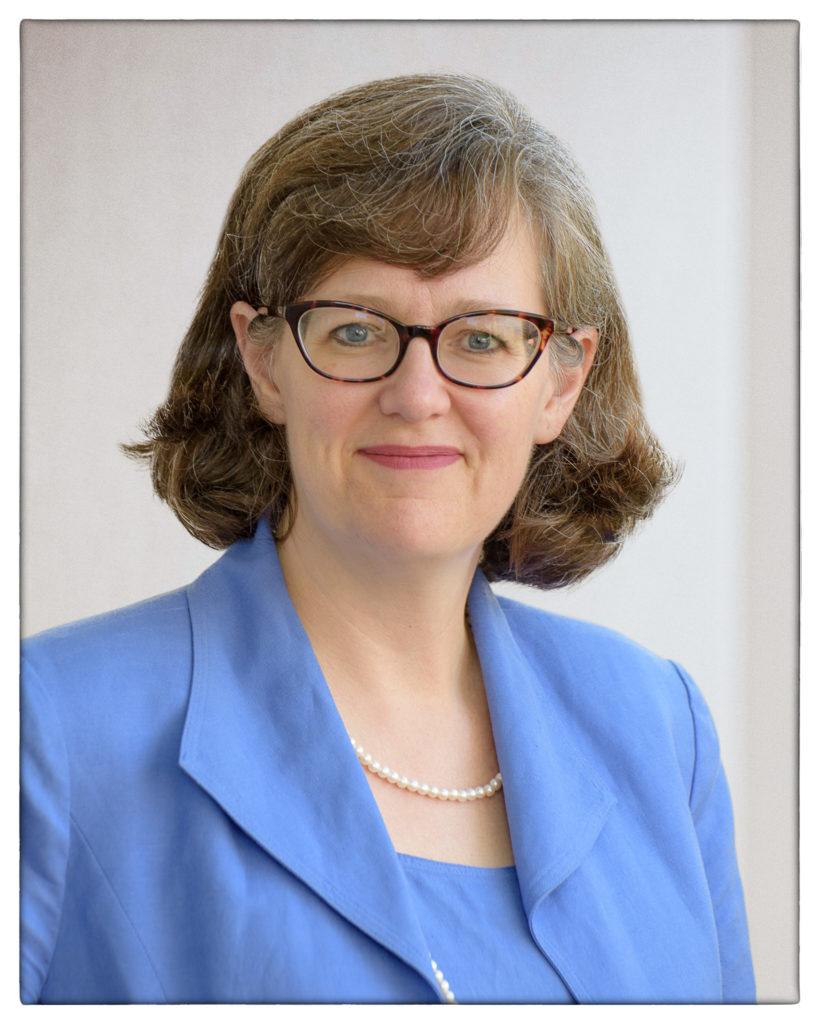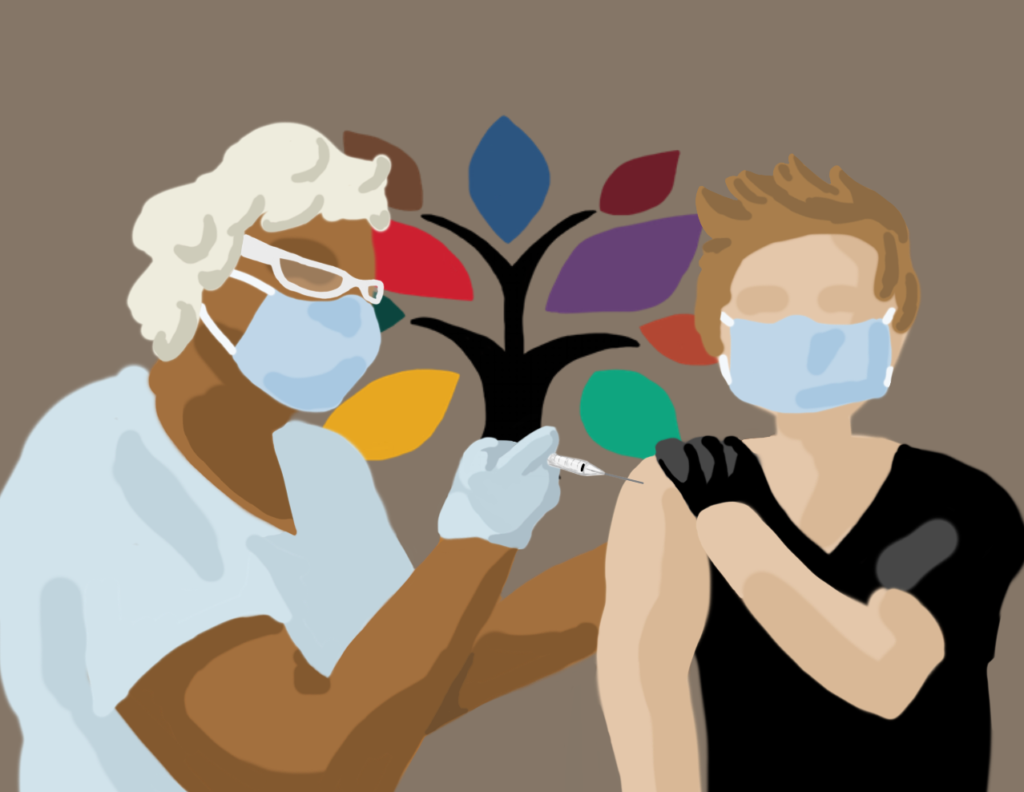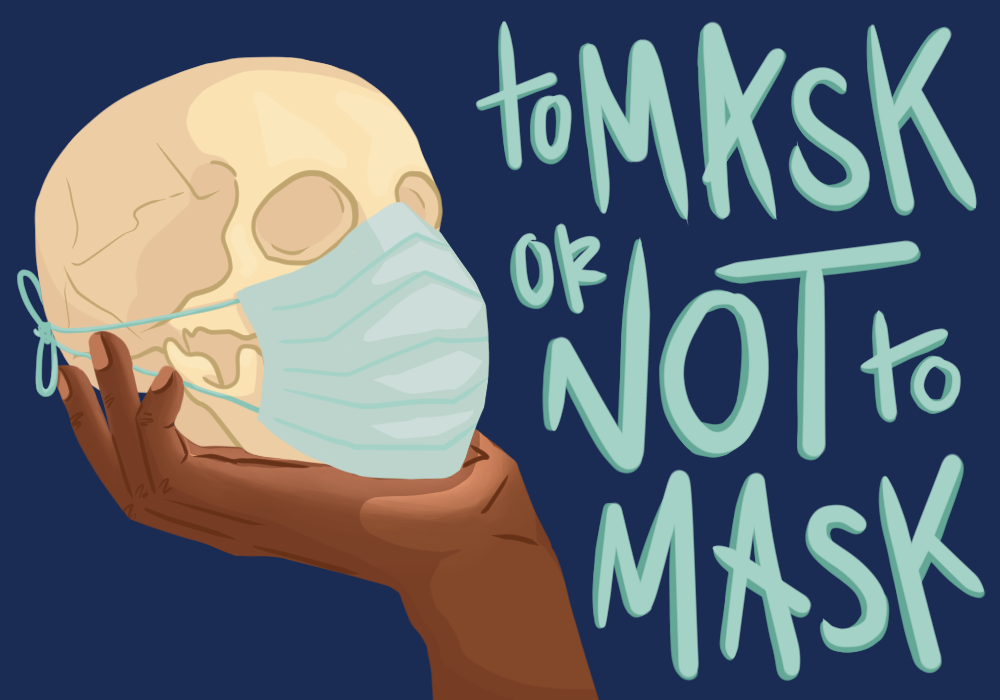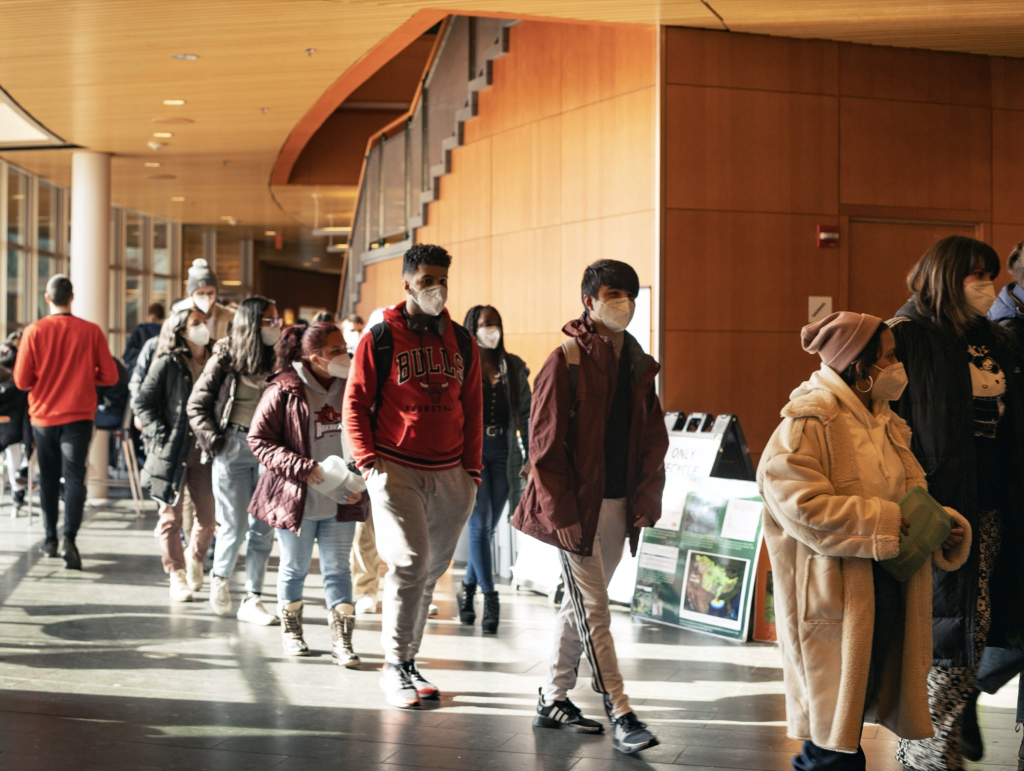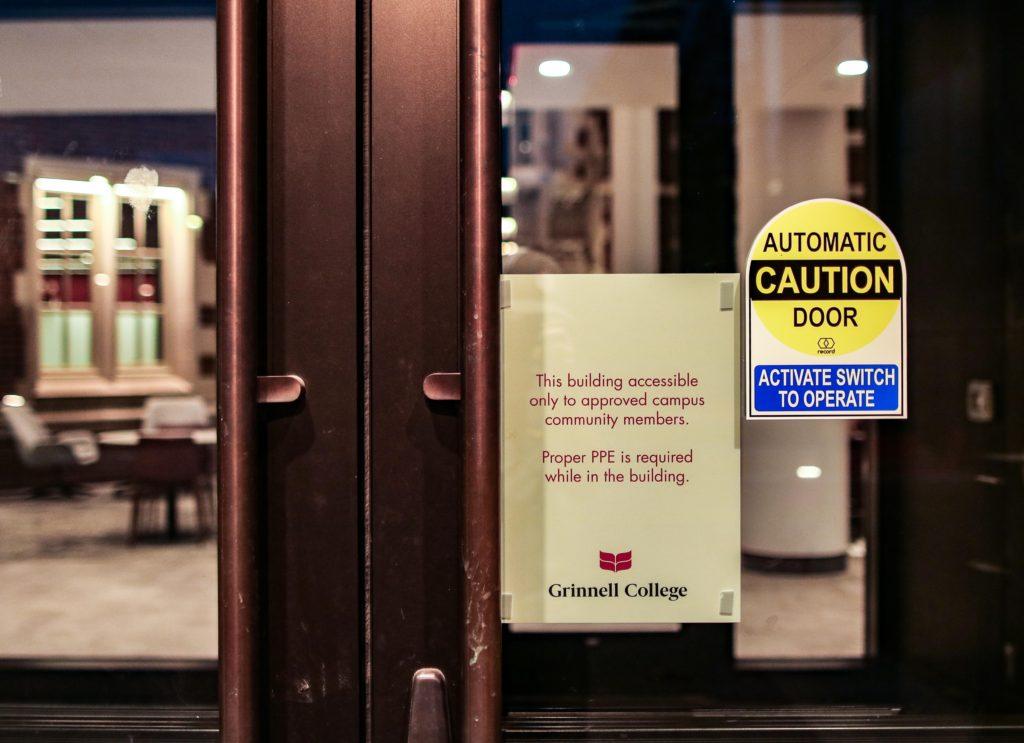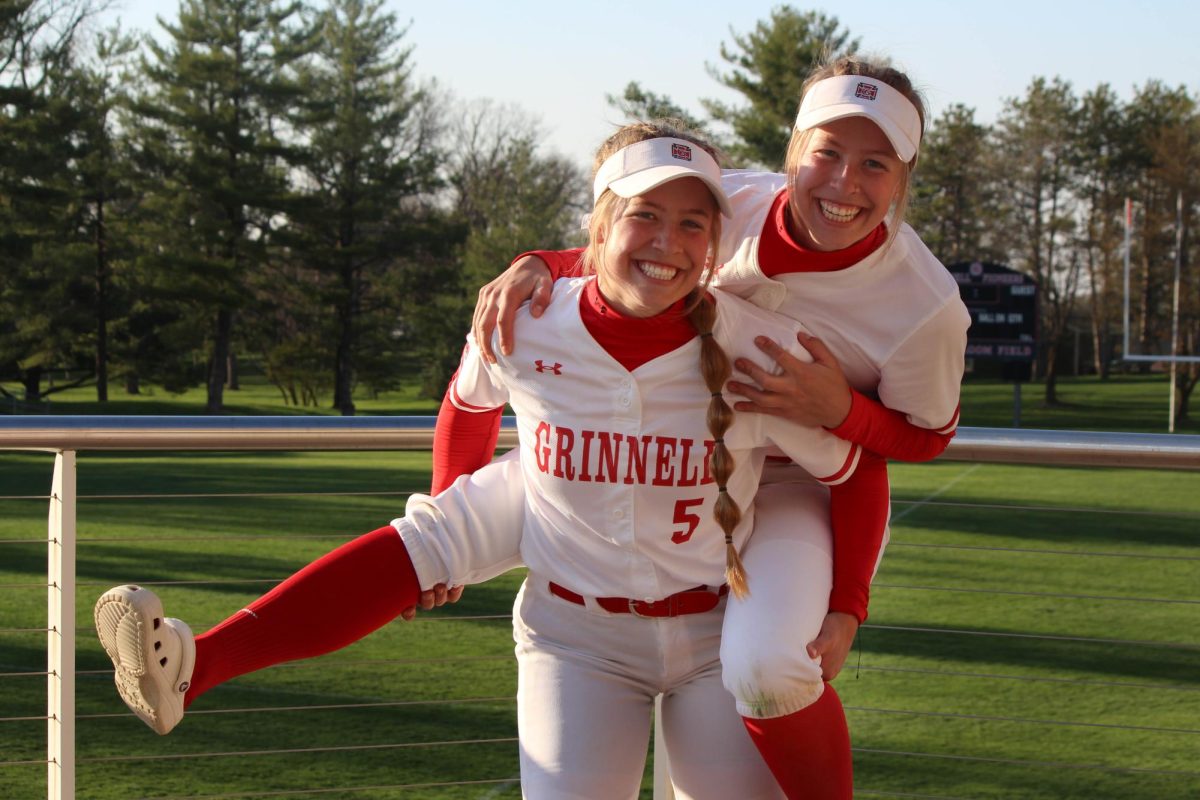Anne Harris has been the acting president of Grinnell College since July 1. She helped to spearhead the College’s response to the COVID-19 pandemic and fall planning process. The S&B’s editors in chief, Zoe Fruchter and Seth Taylor, spoke with Harris on July 10 about public health, racial slurs in the classroom and what advice she would give to a student considering a leave of absence.
The transcript below has been lightly edited and condensed for length and clarity.
The S&B: To begin, you are the acting president of Grinnell College, but you are also an art historian specializing in medieval art. You mentioned previously to us that studying medieval communities has given you insight into how to respond to this public health crisis. Could you expand on that?
Anne Harris: That’s a great question. Any kind of historical background is helpful, just to think about how things were done. So really what’s interesting to me is not the idea of plague or anything scientific, but really about communities in formation and how a community forms after trauma. When I think about our situation now, I will say that there have been resonances.
I want to be very clear that all of my decision making is happening very much in the present, but this is really about a resonance in human history and thinking about communities after trauma, the contemporary trauma being, as they refer to it, the “two pandemics.” The current one of COVID-19 and the 400 year long one of slavery in American culture. In the middle ages there were so many times that a community would be traumatized either by disease or by war. Those are the particular things, communities after trauma, and really thinking about it, not in terms of decision making, but in terms of the resonance with the human experience.
In many ways, Grinnell’s plans for the fall are more conservative than what other institutions have planned, including Grinnell’s peer institutions. Bowdoin anticipates bringing 1200 students back. Williams, 1500 students. Oberlin, 2100. All of which are higher proportions of the total student body. What is it about Grinnell’s situation that necessitates a more conservative approach?
Of course, I will answer this without knowing all of the particulars that went into those decisions or the fallback plans that those decisions may have. So, grant me respect of course for all of our peers. I would say that here at Grinnell we have been monitoring our local situation very closely and our regional and state very closely. I would look to those differences first in terms of how different states are behaving and what the different situations are in terms of the pandemic, but also in terms of the medical support in all of those different contexts.
Many institutions of higher education have been able to benefit from regulations, recommendations and guidelines about return to school from their state departments of public health. The Iowa Department of Public Health has not made any recommendations in terms of institutions of higher education, unlike Minnesota, unlike Massachusetts, unlike Connecticut. We knew we had to do all that work ourselves. So, we’ve done that. Of course, we’re working with the Department of Health, but they haven’t produced any of those guidelines, that’s the key thing here, unlike other institutions.
I will tell you that when I see the governor of the state say – as she did and she might change her mind, so always keep up with the news – that cities cannot mandate masks, then that puts it on us as a college to mandate masks, which we are doing in any shared spaces and public spaces on campus.
I would say that we’re more conservative because we are operating without state guidelines, that we are more conservative because we are looking very closely at our own medical resources and situations and we don’t want to overtax our local communities. We’re also very aware of what the impact would be on our communities. Those are the three main reasons that I would isolate.
We are in a hybrid model, there are students who are going to be fully on campus and some who are going to be having primarily online education experiences. That doesn’t feel the same to students in terms of educational experience and they’re questioning why it should be the same in terms of tuition. So, the question is – why won’t the College lower tuition? Why isn’t the College lowering tuition for these hybrid semesters?
So, it is the same in terms of academic credit and it is the same in terms of degree. That’s the shortest answer that I would give to that. You’re absolutely right, those qualitative aspects are going to be quite different. The quantitative element, what you emerge with at the end of it all, is the same. It is the same in terms of academic credit and it carries the same power towards a degree, and the Grinnell degree carries that same power as well. So, cheapening the Grinnell degree doesn’t help anybody in that sense.
It brings up the really good idea of what tuition pays for. And so, it absolutely pays for that degree, it pays for the credit that builds up to that degree, it pays for direct access to PhD and MFA professors, in other words terminally degreed professors – you’re not interacting with graduate students and so forth. And that hasn’t changed. All of those things have not changed. They’re still very much in place.
What we did do at the College was raise our financial aid. We didn’t lower tuition, but we raised our financial aid. That was our solution. The COVID-19 grants that every student received and then looking at financial aid packages differently in the light of the pandemic, in light of changing family conditions. I know our financial aid team has been working very, very hard.
Again, the credit and the degree, that stays the same. You’re still getting that, and I want to underscore this, you’re still getting that direct access. It may be mediated through a screen but you still have terminal degree professors interacting with you, you’ve got all the support systems that come with a small liberal arts college, all the writing labs, all the advising, all of that attention – that is still there for you. Arguably, all of those individuals are probably working harder than ever to connect with students.
The key is, tuition didn’t go down, but financial aid went up, that was our solution. And different schools have different solutions as well.
As part of this conversation about tuition and experience and the qualitative differences in the classroom experience, many students are struggling with whether to take a leave of absence or not, weighing their academics with their financial situation, their relationships at Grinnell with their family’s circumstances, and much more. If you weren’t a college administrator and the Acting President of this college, what would your advice to those students be?
That’s a great question. I will answer this as the mother of a first-year college student. My son is going to start college this fall. So, your questions are our family’s questions and I am speaking to you in that role.
I would say to consider your long-term goals, in other words, your academic continuity goals. This pandemic will end, there will be that time moving forward towards the completion of your degree. What timeline do you want? If you’re in a situation where you can step back and take that leave and do some alternative things, consider academic continuity. That’s my first thing to say, is to consider that long term plan which, for students, is really three or four years at the most. Where do you want to see yourself four years from now? And that is literally the question we are having with our son here at home. If you were two years away from graduation, will this leave stop things, will this leave help? Could you use the time to do more of your own preparation for your academic and ultimate career goals?
This pandemic will end, there will be a vaccine, we’re moving towards that – although everything I say is conditional and if there is that massive realization that we have to live within this pandemic I think we’re going to see a complete restructuring of higher education – but at this point we’re planning for a post-pandemic return. So, where do you want to see yourself in four years? What is academic continuity? What would that look like for you? Can you get it through some kind of independent means or is it about staying connected with your professors, who are writing letters of recommendation, who are your advisors, who are your mentors? Is it about staying connected with a group of Grinnellians who are going through the same thing?
The other thing I would say is that we have faculty, there’s announcements every week about online faculty development and pedagogy opportunities, so I’ve said this before but the spring online experience and the fall online experience will be different. I don’t know all the particulars, but I do know that there have been all these workshops that have been offered this summer and they’re not stopping.
And the last thing I would say is to reach out to your advisors, to your mentors, and to each other. Really sit down and have these strategy sessions. Don’t lose sight of your degree, that’s really the big goal here, and how does your decision affect that long term goal?
You referenced earlier this is a time of two pandemics – one of them being this public health crisis and one of them being this crisis over institutionalized racism in this country. And so nationally we’re having this conversation about police brutality and the role that law enforcement should or should not play in our communities. Some institutions, and that includes institutions of higher education, are reimagining their relationships with local police departments. Is the Grinnell College administration talking about, anticipating, planning for any change in their relationship with the Grinnell Police Department?
So, I know that right now we have structures in place to have those conversations. In other words, we have both our Chief Diversity Officer, Schvalla Rivera, who’s going to be working with Student Affairs, which oversees campus safety – that’s the on-campus part. So, if you’re having a conversation about campus safety, you’re talking also about relationships with the local police department.
And then of course we’re very well served in our community engagement structures to have the conversations about, what are the policies? What is the training? What is the track record, right? What has happened in our community? People are sharing their own experiences, sharing their stories, and we’re processing those right now, so I would say what I can tell you now is that we have very good structures to have the kind of conversations that we’re talking about. So, we’re starting to do that work. We have to do that work. Absolutely.
There’s been a program where the College invites police officers, who are both in uniform and armed, to eat in the dining hall with students, and this has been the subject of student protest for a few years now. Have there been discussions and is there any action or commitment related to the presence of not just campus safety but to Grinnell police officers on campus?
I was not aware of that program, so I’ll definitely be talking about that. Yeah, I think we really want to look at what the relationships and shared understandings are, as well as the shared values of community engagement. What I know is the structures are there to have those conversations. The content is coming in. Things like that particular program, that needs to be researched. Absolutely.
Another S&B coverage point has been Grinnell’s financial relationship with Iowa Prison Industries. Are you aware of that contract?
I have just become aware of it, yes. Yes. So, unlike the program you just discussed, I do understand that we have a contract with Iowa Prison Industries, and I understand it is connected to our furniture, is that correct? Furniture production? Yeah?
And renovations, yes.
And renovations, okay. So, let me write that down. Yeah, so I’ve become aware of it. As with everything, I’m going to research how it came into being, why it came into being, right? I mean I think there’s always goodwill here. So, what were the reasons that people thought this was a good idea? And what have been the repercussions? What have been the benefits and the negativities? We can do research really well here, so that’s the approach that I would want to take to that.
I can immediately see the importance of having clarity about why we’re involved, and then researching what has happened in that involvement as well. Yeah, because there again the why is the key part. Because somebody thought this was a good idea at some point. And so, what was the perceived benefit? I think we can have a clear sense of the perceived deficit to something like that relationship.
Students are always raising these issues and I think have been emboldened by this national moment to bring attention to aspects of institutions that are not working for them or that they have a problem with. What is the best way to move either into these conversations or beyond these conversations into action? How does a student and how do student voices pierce the institutional veil?
You’re right, I see it. I hear about – I’m not on social media in that way where I’m checking up on things – but I see that a lot of our conversations happen on social media, and I am very eager to move that into conversations and research that we’re doing together. So, my immediate answer is that Student Government Association (SGA) has a direct link to the administration and to leadership, and Lana and I are going to be meeting weekly, for example. But I know there’s more than that, right? There are faculty advisors. There’s Student Affairs.
Other than that, I mean we form task forces very, very quickly here, for many different things. I would say the other thing is to reach out and say, you know, ‘We need a task force on this. We need to research this as an institution.’ And you’re so right, there are times when students move the institution forward, many times when students move the institution forward. I love that phrase, ‘pierce the veil’, by the way. How to pierce the veil to me is to work through SGA or approach me, approach Elaine Marzluff, and say, ‘This is an issue that we feel needs more research.’ And then you get an answer as to, ‘I don’t think this needs more research. This is very well established.’ Or, ‘Yes, let’s bring – who are the best people?’
A good model I think – I think, I wasn’t here – was the fossil fuels conversation. I think there was also a task force and research and so forth that was involved there. We’re a teaching and research institution, so that will be my approach to these things. There are things that I move very quickly on. There are other kinds of deeper things at our institution where we want to take the time to make an informed decision that really hears all arguments and all parties. As many as we can.
I think we’re heading into this in terms of anti-racist pedagogy, in harmful language, in academic freedom. This is related to the issues that you’ve been talking about, Zoe, in terms of how we approach ourselves – each other rather – in the classroom for example.
Just to clarify, are you saying that there is a task force or just that those conversations are happening in terms of academic freedom and racist language.
So no, no, no. I haven’t created one yet. But I feel like we have a critical mass of those conversations that are happening that we need to move into partnership with of course the Chief Diversity Officer, with the Council for Diversity and Inclusion, Executive Council, SGA, Staff Council. Again, pulling people from all those entities to come together and address this particular issue.
And of course, you are seeing institutions of higher ed like ours move from a language of diversity and inclusion to a language of anti-racism. And I think something like the use of racial slurs in the classroom for pedagogical effect or academic context, that needs to be examined. Because there’s harm, so I’m focused on harm. In other words, we can’t just talk about it as academic context. We have to talk about it as harm as well when it comes to anti-racist pedagogy. So that’s what I’m saying.
Do you think that the shift in framing of these issues corresponds with an institutional shift in the actions and consequences for incidences?
Like using racial slurs in the classroom?
Yeah, obviously we’re changing the conversation and changing the language. Does that also change the stakes of these actions?
I would have to say yes. For me, I know we talk a lot about in liberal arts that we’re there to make students uncomfortable. But no student should be made to feel uncomfortable because of their identity. I believe that strongly. This is why so far my focus has been on awareness of harm. As we move that conversation forward through Executive Council, whose purview is educational policy, that is where I would expect to see the different kinds of changes in terms of the repercussions for using racial slurs. But it has to come – we have to have the entire faculty talking about this, involved with this.
I do think that the use of language – if a student is telling me this is causing harm, then that is when my first approach to the faculty member is to say this caused harm and we need to think about that as a community. But now I feel like we’re at this point where we’ve had enough, you know, kind of reporting and instances that we’re at a critical mass moment where we need to have conversations – and I’ve started conversations with the dean of the college, with the chair of the faculty – to say what would this look like.
It is a very complicated issue. It is a very complicated issue. Because again, academic freedom – one of those pillars of higher education. But being against a kind of harm – in other words wellness – is also another pillar of our institution. So how do we bring together the research, the opinions – and I think there’s some really surprising opinions out there – in other words that there are people who say, ‘Well if you make a word unusable, you’re giving it more power than it should have, you know?’ Or, ‘Not all words are the same. Some have much, much heavier cultural weight than others.’ So that’s where I am right now. My position thus far has been to focus the conversation on harm, but I think we’re at a critical mass moment where through our structures we’re going to be moving into a larger conversation. We should. We’re always evolving.




























































